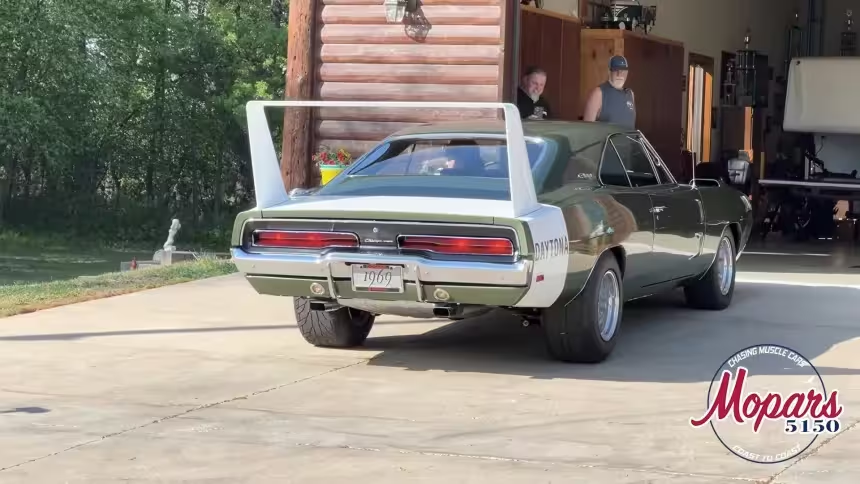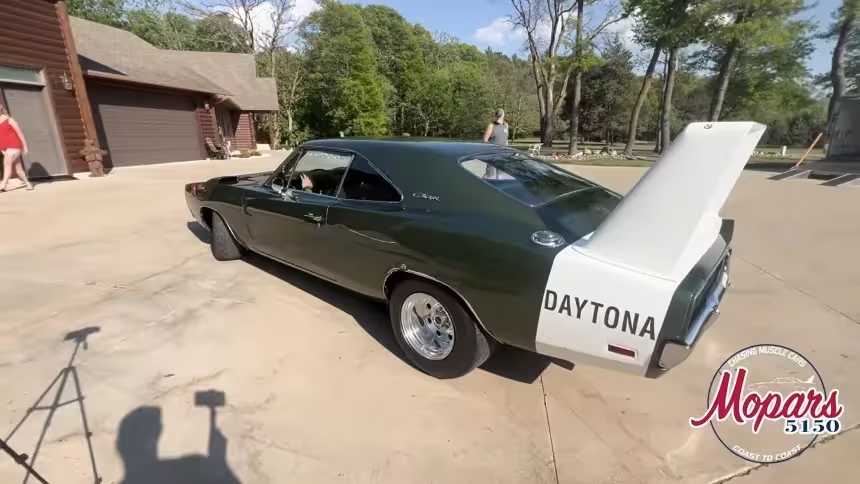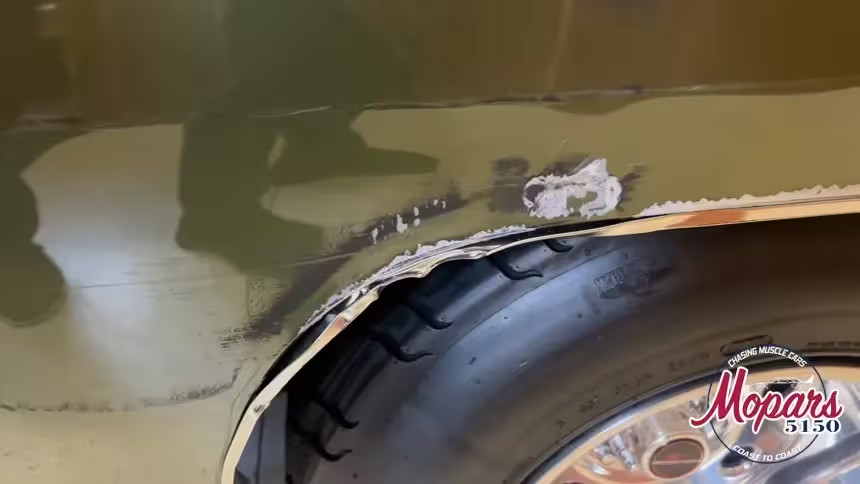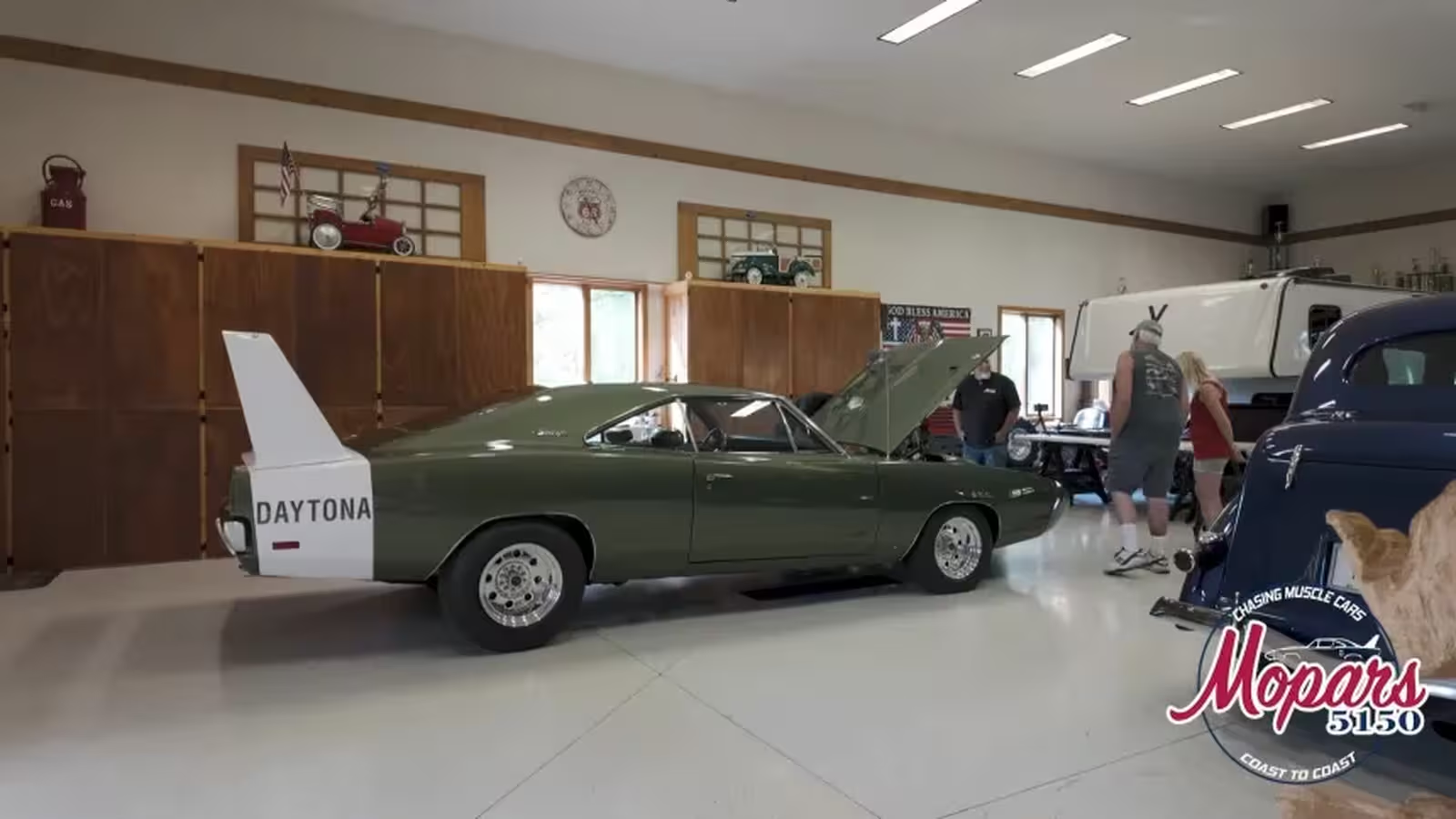9 Minutes
Few cars in American automotive history spark excitement like the original 1969 Dodge Charger Daytona. Today, these ultra-rare Winged Warriors are seldom seen outside of museums or high-profile classic car auctions. But what if you came across a genuine Charger Daytona that’s remained in the same family for over 50 years, survived decades of storage, multiple brushes with theft, and now sports a glued-on fender tag? Let’s dive into the captivating saga of this one-of-a-kind muscle icon.
The Legendary 1969 Charger Daytona: Muscle Royalty
The Dodge Charger Daytona stands among the most coveted American classic cars ever built. Developed as a NASCAR homologation special, the Daytona was a marvel of racing aerodynamics with its signature nose cone and massive rear spoiler—features that made it a menace on the track and an unstoppable force in collector circles. With only 503 produced in 1969, original Charger Daytonas are exceptionally scarce.
Rare Ownership Legacy
What separates this particular Daytona from the rest isn’t just its originality, but its 55-year family ownership. Few enthusiasts can claim to have cared for such a legendary Mopar from nearly day one. While some aspects of its early history remain shrouded in mystery, the car’s authenticity is unquestionable. Its VIN includes the double ‘X’ unmistakable to any Mopar aficionado, confirming its status as a real-deal 1969 Charger Daytona.

Decades in Storage: Forgotten, But Not Lost
After its last official registration in 1973, with just 34,000 miles on the odometer, this Daytona spent the next three decades largely hidden from the world. First, it languished outdoors and under a makeshift shelter, enduring Minnesota winters and the relentless march of time. After a small barn fire, the car was moved into a container, then later stored—somewhat ironically—in the basement of an old bakery. These moves kept it from the public eye until it was unearthed for a fresh restoration in the 2000s.
The Restoration: Bringing a Classic Mopar Back to Life
Restoration duties ultimately fell to Perry Grile, the son of the original owner, Mel Grile. Perry had first seen the Charger Daytona when his father took him to the dealership back in the late 1960s—a memory etched into any true car fanatic’s mind. Together, father and son launched a multiyear restoration project around 2007, pouring extensive time, resources, and passion into returning the classic muscle car to its former glory.
The car eventually hit the road again, trailered to numerous car shows between 2010 and 2024. Yet, its journey was not without mishaps; a minor fender scrape during trailer unloading last autumn left its mark on the otherwise pristine bodywork—an honest reminder of the adventures (and misadventures) that come with long-term ownership.

A Close Call: The Near Theft That Almost Ended the Dream
One of the most dramatic episodes in this Daytona’s lengthy saga involved an attempted theft. After years of storage, Perry was approached by a stranger with an unnerving question about the location of his Charger Daytona. Alarm bells sounded. Perry tracked down his car, only to find it gone again upon his return. After a tense series of encounters—and a police inquiry into whether his newly reclaimed Charger was stolen—Perry was able to prove rightful ownership with original documents and registry information. It’s the kind of plot twist that would challenge even the savviest car detective.
Mystique and Modifications: The Daytona’s Evolving Story
Every Charger Daytona carries a unique backstory, and this survivor is no exception. While family lore once held that the car was purchased new for Mel’s wife, Barbara, forum posts and registry research suggest a more nuanced past. Reportedly, the first owner damaged the car on a lengthy road trip—crunching the distinctive nose cone and front fender—before trading it at White Bear Dodge in St. Paul, Minnesota.
Mel Grile, a racer sponsored by the dealership, was tipped off that the Charger Daytona was available. According to family accounts, Mel and Perry arrived at the showroom to find three Daytonas and a Plymouth Superbird. Curiously, the Superbird shouldn’t have been present until later in 1969, reinforcing that this rare muscle car was indeed a pre-owned pick.
Over the years, modifications have personalized the Daytona: black-painted wing and stripes, and a special set of ten-lug chrome steel rear wheels with robust 50-series tires—visible in gallery photos and reminiscent of period-correct drag racing upgrades. Mel even sourced parts from Petty Enterprises, a legendary name in NASCAR, to repair and enhance the car.
The Glued-On Fender Tag: Authenticity and Provenance Challenges
In the life of any collectible classic, documentation is everything. This Daytona’s fender tag—a crucial identifier for its build specification and authenticity—went missing after decades of storage. Mel Grile contacted Dodge for a replacement, only to discover that someone in the Dakotas had simultaneously requested a reproduction. Thanks to Mopar’s meticulous verification process and documentation, the Minnesota claim was proven legitimate and a new tag was issued.
Unwilling to let this vital piece be lost or stolen again, Mel resorted to gluing the fender tag screws in place—a makeshift solution, but one that ensures the car’s crucial proof of identity remains intact for future generations and potential buyers.

Specifications and Performance: What Makes the 1969 Charger Daytona Special?
The 1969 Dodge Charger Daytona is revered not only for its rarity, but also for its formidable performance specs. Built to dominate NASCAR, the Daytona’s 440 cubic-inch Magnum V8 produced a potent 375 hp, propelling the car from 0-60 mph in around 5.5 seconds—a blistering pace for its era. Some models carried the legendary 426 Hemi, making them even more valuable.
Aerodynamic enhancements, including the prominent nose cone and 23-inch tall rear wing, were engineered to deliver optimally balanced high-speed stability. The Daytona routinely topped 200 mph on the oval, making it a direct threat to the best from Ford and Chevrolet. Today, these Mopars are still considered among the most collectible, high-value muscle cars ever.
Design and Market Positioning: An Icon Amongst Classics
With its radical styling and motorsport pedigree, the Charger Daytona stands out even among Mopar’s finest. The distinctive aerodynamic shape, wild colors, and notorious rarity position the Daytona atop many collectors’ wish lists. Its limited production run—503 units—ensures near-mythical status and skyrocketing values at top auctions.
Current valuations for authentically restored examples can easily surpass $500,000, with especially rare, well-documented models and those with original components reaching well into seven figures. While the glued-on fender tag and survivor-quality scars on this example may give some collectors pause, its remarkably complete history, confirmed authenticity, and irreplaceable family provenance may, in fact, boost its appeal.
Comparisons: Where Does This Daytona Stand?
Among American muscle car legends, only the Plymouth Superbird can directly rival the Charger Daytona for sheer presence, rarity, and performance. Modern muscle cars—even those from Dodge’s Hellcat era—stand on the shoulders of these ‘60s trailblazers, but few (if any) will ever command the universal reverence and value of the original Winged Warriors. The story, modifications, and survival tale of this particular Daytona place it firmly in the realm of one-of-a-kind classics.
Conclusion: The Enduring Legacy and True Worth of the 55-Year Daytona
The odyssey of this 1969 Dodge Charger Daytona is testament to the unwavering passion of car enthusiasts and the indestructible spirit of American muscle. From its glorious racing roots to its twists and turns through storage, theft attempts, and creative restoration, it’s a rolling piece of history that captures the imagination of collectors and fans alike.
What’s it truly worth? While auction results and price guides provide a starting point, the unrepeatable history and unique provenance of this Charger Daytona ensure its value extends far beyond numbers. It is, ultimately, a legend reborn—ready for its next chapter, whether under new guardianship or remaining in the loving hands of the family that’s cherished it for more than half a century.
For a closer look at this extraordinary car—including those famous ten-lug wheels, the glued-on fender tag, and the unmistakable rumble of its 440 Magnum V8—check out the images and video below.
Source: autoevolution


Leave a Comment